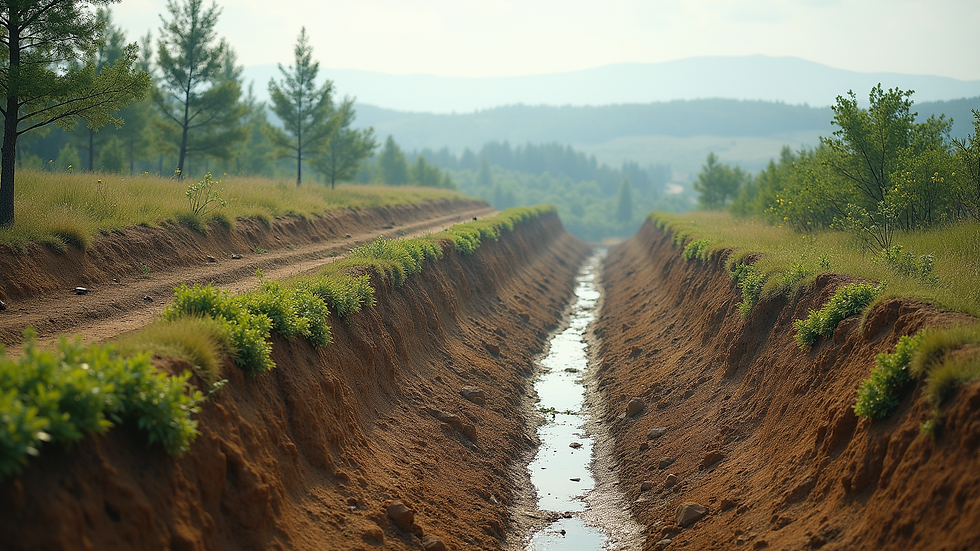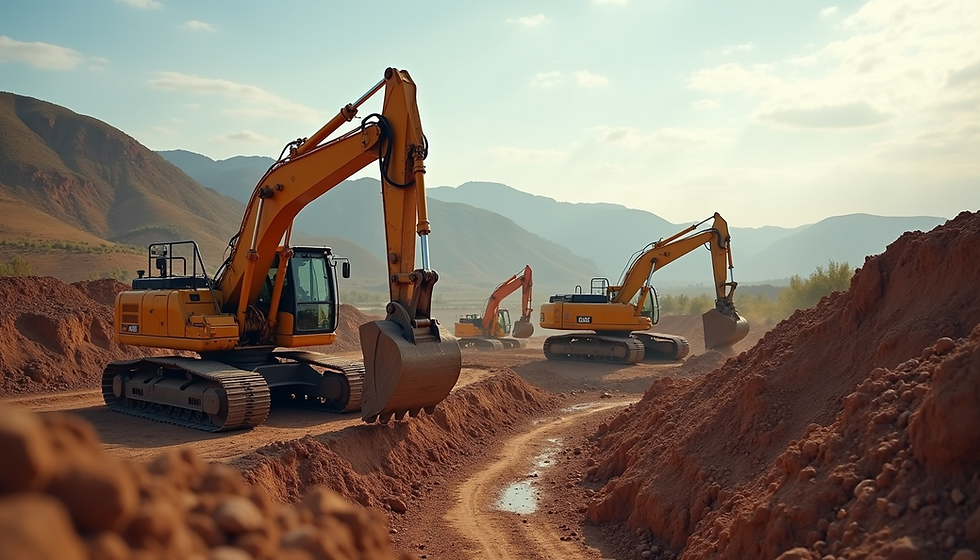Understanding the Importance of Land Grading for Your Construction Project
- Dirt Gypsy

- Oct 8
- 4 min read
Land grading is a key step in construction that often gets overlooked. However, its impact is significant and can determine the success of your project. Land grading involves leveling and shaping the land in preparation for building or landscaping. Proper grading can prevent issues like water drainage problems, soil erosion, and structural damage later on. This article will explore why land grading is important, the techniques involved, and the benefits it provides for your construction project.
What is Land Grading?
Land grading is the process of adjusting the slope and elevation of land. This is typically accomplished using equipment like bulldozers, graders, and excavators. The goal is to create a flat surface or a specific slope that directs water away from structures, ensuring stability and proper drainage.
For example, when grading a lot for a new home, creating a gentle slope away from the foundation is essential. This can help divert rainwater and prevent flooding in basements, protecting homeowners from potential costly repairs.
The Importance of Proper Drainage
A primary reason for land grading is ensuring proper drainage. Water accumulation leads to issues such as flooding, soil erosion, and damage to building foundations. For instance, homes on poorly graded land are 50% more likely to experience water-related problems, such as damp basements.
Additionally, inadequate drainage can allow mold and mildew to grow, posing health risks. Therefore, investing in quality land grading goes beyond aesthetics; it is vital for the long-term integrity of your construction project.
Techniques Used in Land Grading
There are several techniques used in land grading, each suited for different project needs. Common methods include:
Cut and Fill: This method involves removing soil from elevated areas and using it to fill lower spots to create a level foundation. This approach is common for residential homes and commercial buildings.
Slope Grading: This method shapes the land to create a specific slope, especially useful in areas with heavy rainfall. For instance, a property with a 5% slope can effectively direct water runoff.
Contour Grading: This technique follows the natural contours of the land to minimize soil erosion and enhance water retention. It is often used in agricultural land to preserve topsoil.
Laser Grading: Advanced laser technology allows for precise grading, particularly beneficial for large projects where accuracy is key. This can improve efficiency and reduce costs over time.
Each technique works best under certain conditions, making it essential to choose the right one based on project requirements.
Benefits of Land Grading
Investing in land grading has numerous benefits that can improve the success of your project, including:
Enhanced Drainage: Correct grading reduces the risk of flooding and related water damage.
Stable Soil Foundation: Well-graded land compacts the soil effectively, providing stability for buildings. For example, effective soil compaction can decrease settling by up to 30%.
Erosion Control: Proper grading prevents soil erosion. An estimated 75% of the topsoil in the U.S. is at risk, making this a critical consideration.
Aesthetic Appeal: A well-graded landscape can significantly increase the property's attractiveness to buyers and renters.
Increased Property Value: Properties with proper grading typically see a price increase of 10% to 15%, making it a sound investment.
Common Mistakes in Land Grading
While grading is essential, errors can lead to significant problems. Common mistakes include:
Neglecting Drainage: Poor drainage planning can result in future flooding and damage. Ensure there's a clear plan for how water will flow away from the property.
Insufficient Soil Compaction: Inadequate compaction can lead to shifting soil under buildings, which may cause structural failure. Compacted soil should reach at least 90% of the maximum dry density.
Ignoring Regulations: Local regulations regarding land grading are often strict. Disregarding these can lead to fines or project delays.
Overgrading: Excessive alterations can disturb the local ecosystem. For instance, grading can lead to habitat destruction if carried out indiscriminately.
Hiring a Professional for Land Grading
Due to the complexities of land grading, it’s usually best to hire a professional. Experienced contractors know how to assess land, select the best techniques, and execute them effectively.
When selecting a contractor, check their credentials and past project references. A reputable contractor will provide a detailed plan, ensuring your project remains on track. This investment in professional services can save time and money in the long term.
Final Thoughts
Land grading is a fundamental part of any construction project that cannot be neglected. Proper grading plays an essential role in ensuring good drainage, stable foundations, and ultimately, project success. By understanding the importance of land grading, along with the right techniques, you can make decisions that benefit your construction project significantly.
Investing in professional land grading can prevent future headaches and expenses. Whether you’re embarking on a new build, developing a commercial site, or enhancing your yard, proper grading is a critical step in ensuring that your project stands on a solid foundation.




Comments